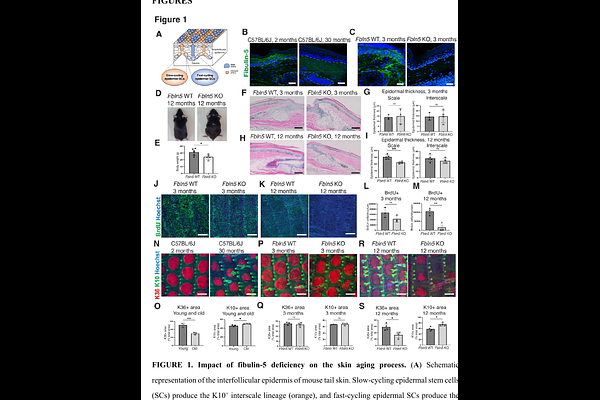Integrin-binding matricellular protein fibulin-5 maintains epidermal stem cell heterogeneity during skin aging

Integrin-binding matricellular protein fibulin-5 maintains epidermal stem cell heterogeneity during skin aging
Fan, W.; Ishikawa, M.; Raja, E.; Hegazy, A. M.; Date, H.; Ngo, Y. X.; Sato, Y.; Yamagata, K.; Yanagisawa, H.; Sada, A.
AbstractThe extracellular matrix (ECM) is crucial in building the extracellular environment and translating extracellular information into biochemical signals that sustain organ functions. Fibulin-5 (Fbln5) is a multifunctional ECM protein essential for forming elastic fibers and regulating cellular functions by binding to integrins. While fibulin-5 expression decreases with age in human skin, the functional implications of this decrease, particularly in epidermal stem cell regulation, have remained largely unexplored. Here, we find that the knocking out of Fbln5 in mice results in early impairments of epidermal stem cell properties, similar to the chronological aging of the skin. The Fbln5 deficiency suppresses the expression of integrins and other cell junction proteins, leading to the inactivation of YAP signaling in epidermal stem cells. This reduction in YAP signaling results in the downregulation of the fast-cycling epidermal stem cell marker SLC1A3 in human skin and primary keratinocytes. These results suggest that, in addition to its known function in elastic fiber formation, fibulin-5 also plays a critical role in regulating the balance of epidermal stem cell populations during skin aging and coordinating the crosstalk between the extracellular environment and intracellular signaling.